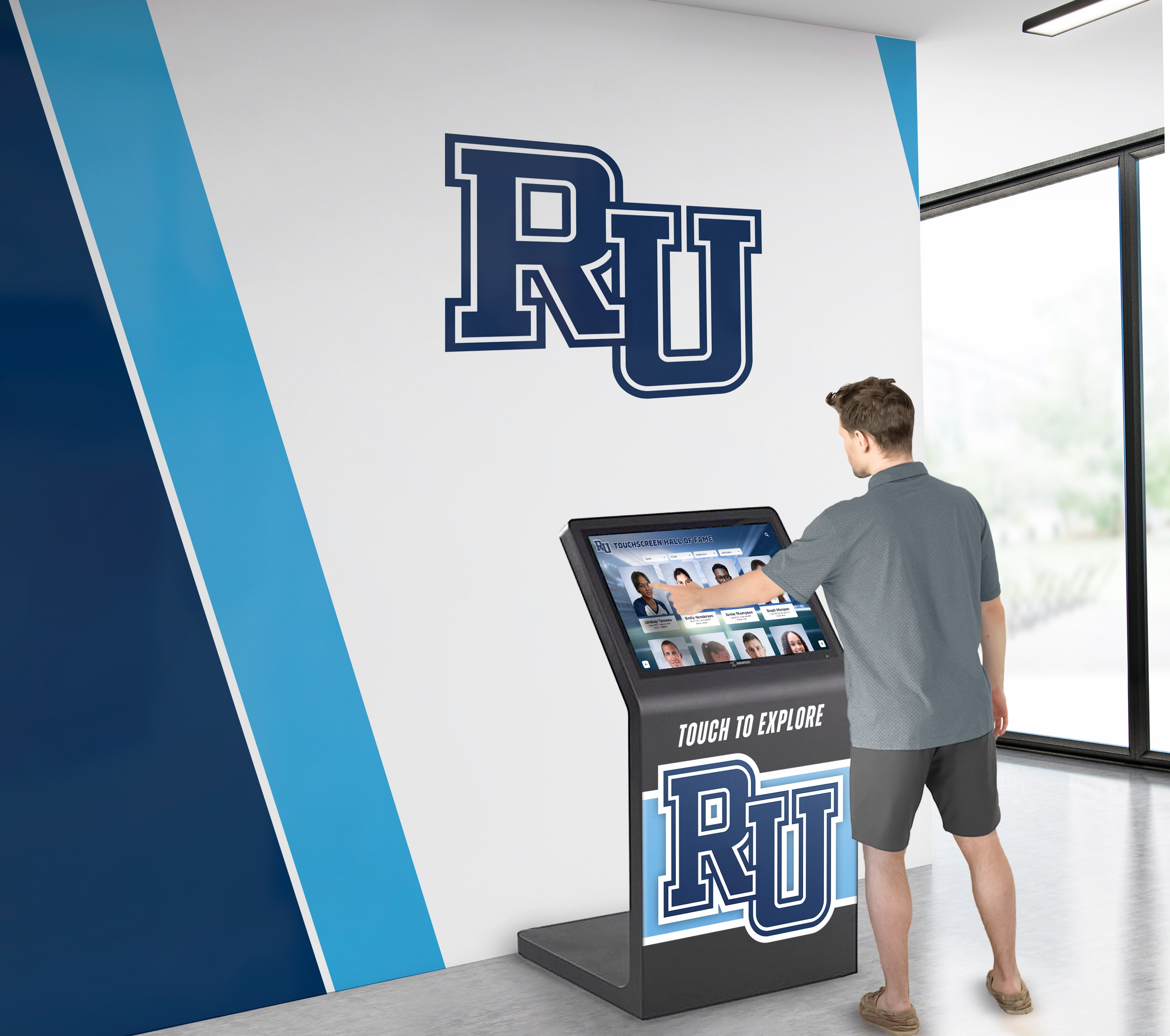Key Takeaways
Discover how digital recognition displays revolutionize college recruiting campus visits for prospective student-athletes. Learn strategies for showcasing athletic excellence, creating lasting impressions, and leveraging modern technology to attract top recruits.
The Campus Visit: Your Most Valuable Recruiting Opportunity
Campus visits represent critical moments in the college recruiting journey for prospective student-athletes. These in-person experiences allow recruits to move beyond highlight reels and social media posts to truly understand what it would be like to compete for your program, study at your institution, and become part of your community.
According to recruiting experts, prospective athletes form lasting impressions within the first 15-20 minutes of arriving on campus. Everything they encounter during this initial period—from parking lot signage to lobby displays to athletic facility presentation—contributes to an overall perception that significantly influences their college decision.
Why Traditional Recognition Falls Short During Recruiting
Many athletic programs rely on traditional trophy cases, wall plaques, and bulletin boards to showcase achievements during recruit visits. While these approaches provide basic recognition, they fail to engage modern student-athletes who have grown up in a digital world.
Traditional trophy cases present several challenges during recruiting visits. Physical space limitations force difficult choices about which achievements to display, older accomplishments often get stored away to make room for recent awards, dust and deterioration diminish professional presentation, and visitors can only glimpse basic information from outside the glass.
Perhaps most critically, traditional displays offer no way for recruits to explore content relevant to their specific interests. A basketball recruit cannot easily find information about your program’s basketball history when it’s mixed with achievements from a dozen other sports in a crowded trophy case.
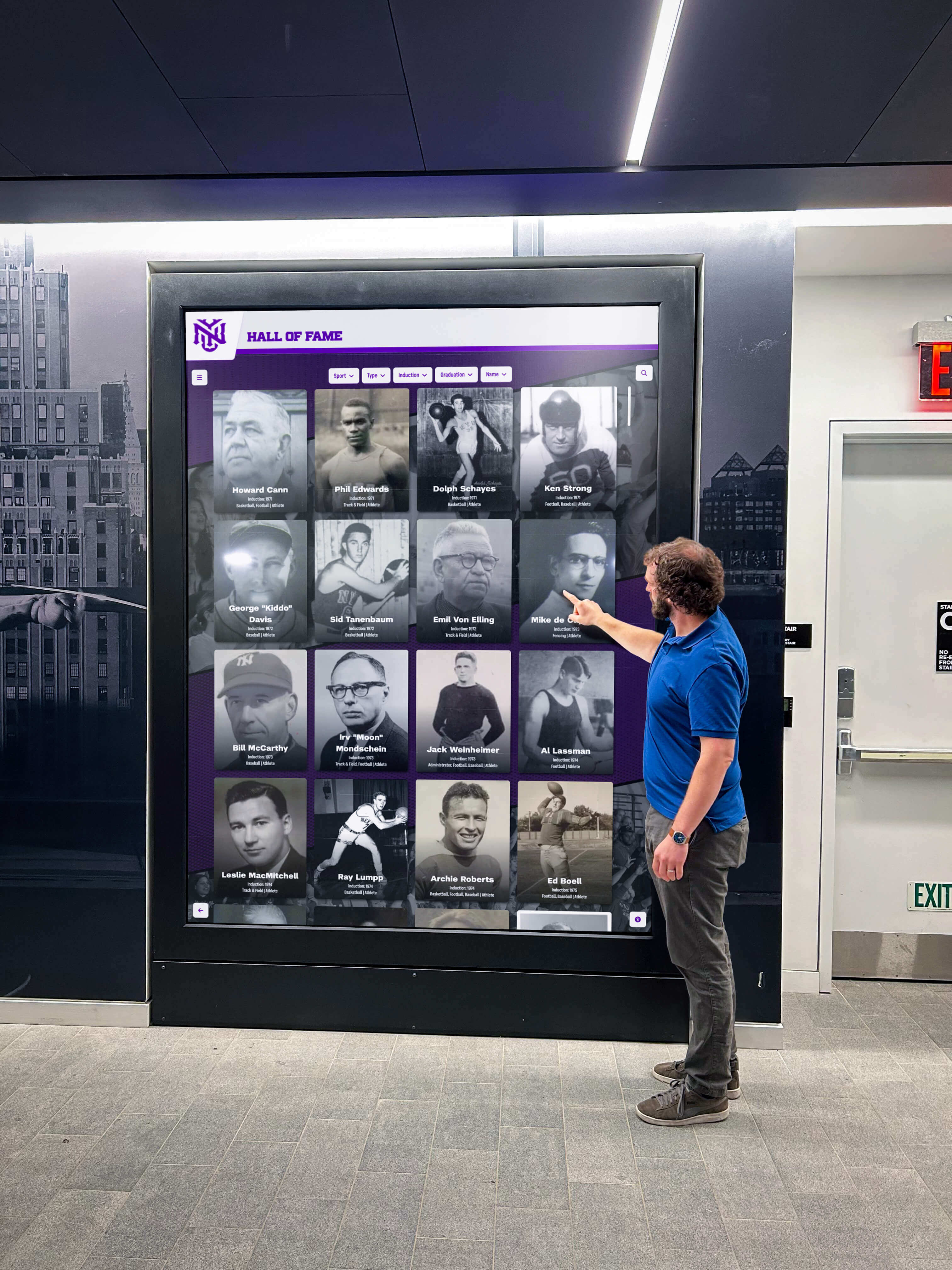
The Digital Advantage in Recruiting Presentations
Modern digital recognition displays transform how athletic programs present themselves to prospective student-athletes. These interactive systems provide comprehensive, searchable achievement databases that enable recruits to discover exactly what matters most to them about your program’s history and culture.
When a prospective athlete can walk up to a touchscreen display and instantly view your program’s championship history, explore profiles of athletes who went on to professional careers, see college commitment celebrations from recent graduates, and browse individual records in their specific sport, they experience your program in ways that traditional recognition simply cannot match.
Creating Memorable First Impressions with Digital Recognition
The moment prospective student-athletes enter your athletic facilities, they begin forming judgments about your program’s quality, traditions, and commitment to excellence. Strategic placement of professional digital recognition displays in high-traffic areas creates immediate positive impressions that set the tone for the entire visit.
Strategic Placement for Maximum Impact
Main entrance lobbies represent prime locations for comprehensive digital recognition displays. When recruits walk through your doors and immediately encounter professional, interactive showcases of program excellence, they understand that athletics matter at your institution and that achievements receive proper celebration and documentation.
Athletic corridor displays between parking areas and competition venues ensure recruits encounter recognition naturally during facility tours. Locker room area displays immerse prospective athletes in program culture during intimate spaces where they can envision themselves preparing for competition. Training facility installations inspire recruits during strength and conditioning tours by showcasing the development journey of successful alumni athletes.
The key is creating natural encounter points throughout your facilities so recognition becomes an integrated part of the recruit experience rather than something that requires explicit direction or guided tours to discover.
Showcasing What Matters Most to Recruits
Prospective student-athletes visit your campus with specific questions they’re hoping to answer. Will I get playing time? What kind of success has this program achieved? What happens to athletes after they graduate? Who are the program legends I could learn from? Does this program develop professional-caliber athletes?
Digital recognition platforms enable you to address these questions comprehensively through organized, searchable content that recruits can explore independently.
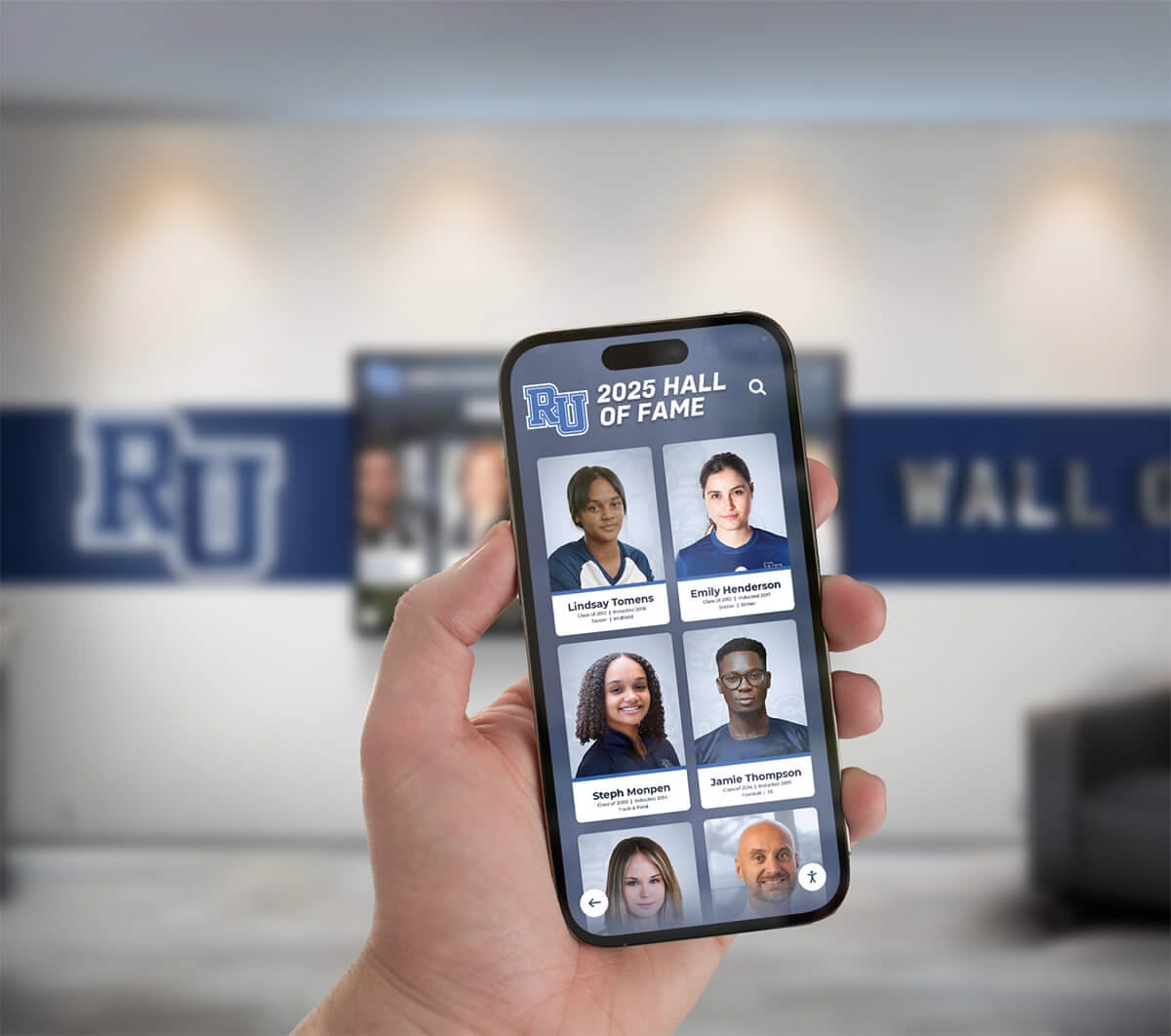
Championship History and Competitive Success: Comprehensive documentation of conference championships, regional titles, and national tournament appearances demonstrates your program’s competitive standard. Interactive timelines showing championship progression over decades help recruits understand program trajectory and sustained excellence versus one-time success.
Individual Achievement Recognition: Digital trophy case displays showcasing all-conference selections, academic all-Americans, and record holders in specific events or positions show recruits the level of individual excellence your program produces. When prospects can see athletes at their position who achieved similar accolades, they can better envision their own potential success.
College and Professional Pathways: Perhaps most importantly for recruiting, comprehensive documentation of where your athletes go after graduation speaks volumes about program quality. Systems that showcase college athletes who advanced to professional leagues, athletes who earned graduate degrees or prestigious careers, and the diversity of post-graduation success stories demonstrate that your program prepares athletes for life beyond college competition.
Solutions like Rocket Alumni Solutions provide purpose-built platforms enabling athletic departments to organize this content in ways that naturally guide recruit exploration during campus visits, ensuring prospective athletes encounter the information most relevant to their decision-making process.
Engaging Recruits Through Interactive Experiences
Today’s prospective student-athletes have grown up with smartphones, tablets, and touchscreen interfaces. They expect technology to be intuitive, responsive, and engaging. Digital recognition displays that provide interactive exploration capabilities align with these expectations while creating memorable experiences that differentiate your program from competitors.
Personalized Exploration Pathways
Every recruit visits with different interests and priorities. A linebacker cares about defensive records and alumni who played in the NFL. A distance runner wants to see school records at their events and alumni who qualified for Olympic trials. A goalkeeper wants championship histories and save percentage leaders.
Interactive digital displays enable personalized exploration where each recruit creates their own journey through your achievement content based on their specific interests. Search functionality allowing instant lookup of specific athletes, years, sports, or achievement types ensures recruits can quickly find what matters most to them rather than being forced through predetermined sequences.
Filtering capabilities enabling recruits to view only championships in their sport, only achievements from specific decades, or only athletes who went on to professional careers help them discover relevant content without being overwhelmed by achievements across all programs and all years.
Multimedia Storytelling That Inspires
While names and dates provide basic information, multimedia content creates emotional connections that inspire recruits to envision themselves achieving similar success at your institution.
Video highlights from championship competitions let recruits experience pivotal moments in program history. Photo galleries from award ceremonies, team celebrations, and alumni gatherings help prospects visualize the community they would join. Audio clips from fight songs, crowd reactions, and athlete testimonials immerse recruits in program atmosphere and culture.
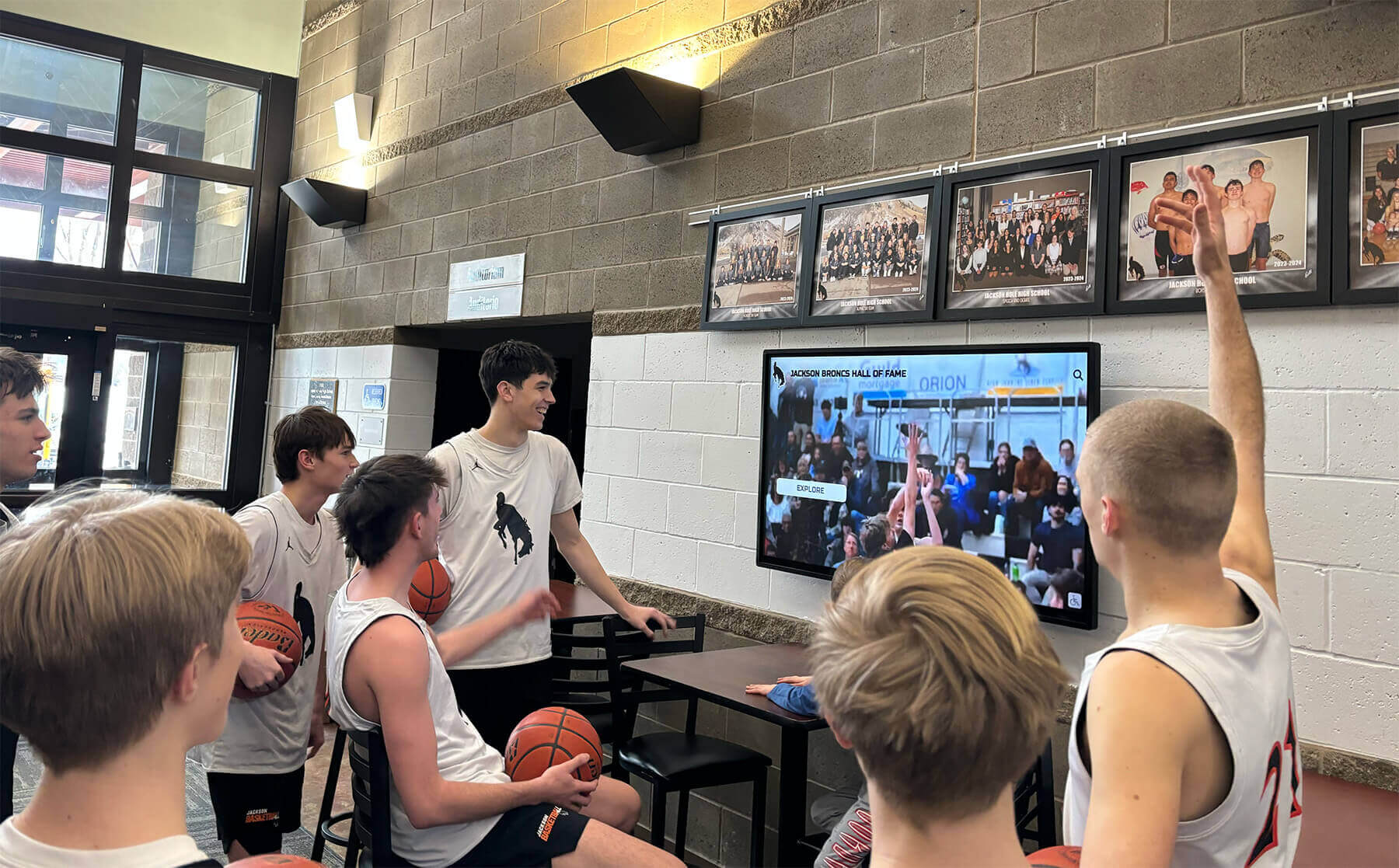
This multimedia depth transforms recognition from simple acknowledgment into compelling storytelling that engages recruits emotionally and helps them feel connected to your program’s traditions before they even make a commitment.
Social Connectivity and Extended Engagement
Campus visits typically last only a few hours, but recruiting relationships continue for weeks or months afterward. Digital recognition systems with web accessibility enable recruits to revisit content they explored during campus visits from home, share specific achievements with parents and coaches for input on their decisions, and continue engaging with your program’s story throughout their decision-making process.
Many platforms integrate social sharing functionality allowing recruits to post impressive achievements or program milestones to their social media accounts, extending your program’s visibility to hundreds of connections while the recruit publicly expresses interest in your program.
Demonstrating Program Development and Success Culture
Beyond individual achievements, prospective recruits want to understand your program’s culture, values, and approach to athlete development. Digital recognition systems enable comprehensive documentation of program philosophy and development success that traditional displays cannot match.
Showcasing Comprehensive Athlete Development
Top recruits choose programs based not just on competitive success but on comprehensive development opportunities that prepare them for life beyond college athletics. Your digital recognition content can showcase this commitment through multiple dimensions.
Academic Excellence Recognition: Displaying academic all-conference selections, scholar-athlete awards, and post-graduation career success demonstrates that your program values classroom achievement alongside athletic performance. This balance appeals to recruits and their families who understand the importance of education.
Leadership Development: Highlighting team captains, community service initiatives, and leadership awards shows recruits that your program develops character and prepares athletes for leadership roles in their careers and communities after graduation.
Training and Performance Innovation: Documentation of training facility upgrades, sports science integration, and athlete performance metrics over time demonstrates your commitment to providing cutting-edge development resources. Recruits want assurance that your program invests in the tools and technology that will help them reach their athletic potential.
Alumni Success Stories: Comprehensive profiles of program alumni showcasing their post-graduation achievements—whether professional athletics, graduate education, or successful careers—prove that your program prepares athletes for long-term success beyond college competition.
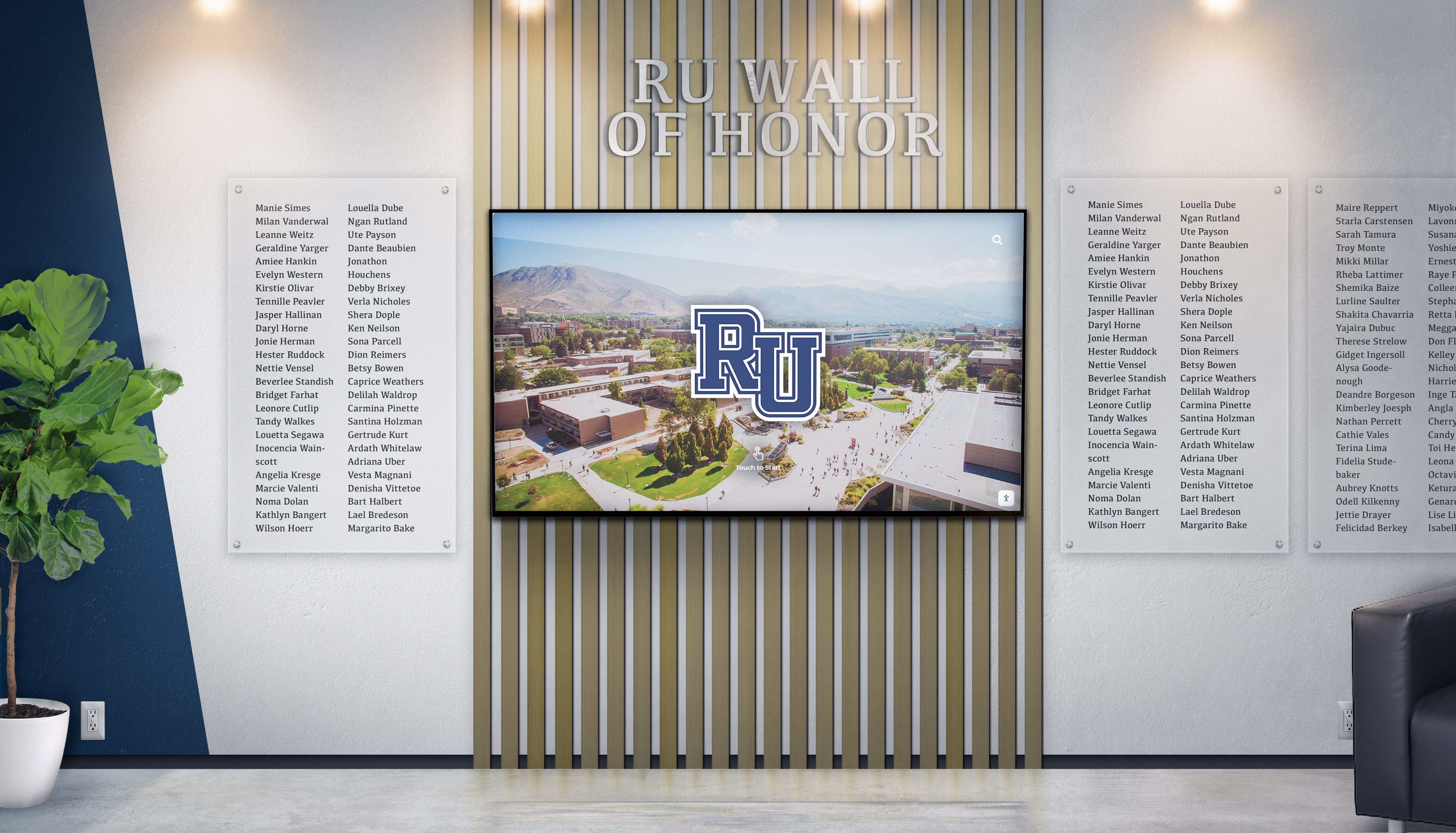
Building Credibility Through Transparent Documentation
One of the most powerful aspects of comprehensive digital recognition is transparency. When recruits can independently explore decades of program history, search for any athlete or achievement, and see complete documentation of both successes and rebuilding periods, they develop trust in your program’s honesty and authenticity.
Many programs worry about displaying periods of struggle or down years. However, comprehensive historical documentation that shows how your program has evolved, overcome challenges, and built sustained success often resonates more powerfully with recruits than attempting to present only highlight reels.
Transparency also extends to showcasing college commitments from recent graduating classes. When prospects can see where recent athletes signed, what levels they’re competing at, and the diversity of opportunities your program prepares athletes for, they gain realistic understanding of post-graduation pathways.
Integrating Digital Recognition into Campus Visit Experiences
Effective use of digital recognition during recruit visits requires thoughtful integration into overall visit programming rather than treating displays as separate attractions that may or may not get noticed.
Strategic Facility Tour Stops
Many athletic departments conduct structured facility tours as core components of campus visits. Building specific stops at digital recognition displays into these tours ensures recruits encounter and engage with program achievement content.
Rather than simply walking past displays, tour guides can demonstrate functionality by helping recruits search for specific content relevant to their interests, highlight particular achievements or athletes that relate to the recruit’s position or goals, and encourage hands-on exploration by inviting recruits to interact directly with touchscreen interfaces.
These guided interactions teach recruits how to use the systems so they feel comfortable exploring independently later during meals, downtime, or if they return for additional campus visits.
Creating Independent Exploration Opportunities
While guided facility tours ensure recruits see key spaces and recognition displays, some of the most meaningful engagement happens during independent exploration when recruits can follow their genuine interests without feeling observed or guided.
Strategic placement of displays in spaces where recruits naturally spend time during visits maximizes independent engagement. Cafeterias where recruits eat meals with current athletes, locker room areas where they might suit up for workouts or practices, and lobby spaces where they wait for scheduled appointments or meetings all provide natural opportunities for casual exploration.
When recruits discover impressive achievements or interesting alumni stories during these independent moments, the content often resonates more powerfully than information presented during formal facility tours.
Connecting Current Athletes with Program Legacy
Many successful recruiting visit programs include opportunities for prospects to meet with current team members. Digital recognition displays facilitate meaningful conversations during these interactions by providing visual references and conversation starters about program traditions, legendary athletes, and shared experiences that connect current team members to historical excellence.
Current athletes can share personal perspectives on what program achievements mean to them, how recognition culture motivates performance, and what it feels like to see their own accomplishments celebrated alongside program legends. These authentic testimonials from peers often carry more weight with recruits than any presentation from coaches or administrators.
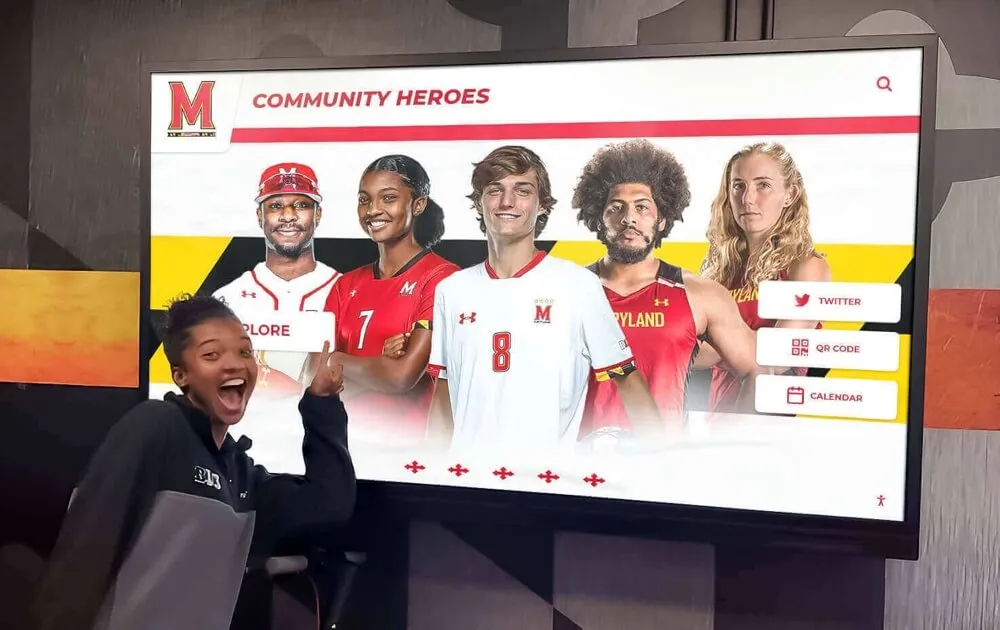
Leveraging Technology for Remote and Virtual Recruiting
While in-person campus visits remain the gold standard for recruiting experiences, modern recruiting often includes virtual components—particularly for prospects who live far away, face financial barriers to visiting multiple campuses, or who want to learn about programs before committing to official visits.
Web-Based Recognition Access
Digital recognition platforms with web accessibility extend your program’s ability to showcase achievements to recruits anywhere in the world. Prospective athletes researching programs from home can explore your achievement database, view championship histories, and learn about program culture without ever setting foot on campus.
This remote access serves multiple recruiting purposes. It enables initial discovery and relationship building before official visits. It allows recruits to revisit content they explored during campus visits as they deliberate decisions. And it provides opportunities for parents, coaches, and other influencers in recruits’ lives to learn about your program’s quality and traditions.
Many schools report that comprehensive digital recognition accessible online significantly increases recruiting interest and visit conversion rates because prospects arrive on campus already educated about program excellence and excited about traditions they’ve explored remotely.
Virtual Tour Integration
During periods when in-person visits may be limited or for prospects who cannot travel to campus, virtual tour experiences incorporating digital recognition content provide valuable alternatives. Video tours can showcase recognition displays, demonstrate interactivity, and highlight specific achievements and alumni stories that would be featured during in-person visits.
Screen recordings of actual digital recognition platforms allow remote prospects to see exactly what they would experience on campus, maintaining consistency between virtual and in-person recruiting presentations.
Mobile Accessibility During Campus Visits
Some advanced digital recognition platforms provide mobile-responsive web interfaces that recruits can access on smartphones during campus visits. This functionality enables prospects to pull up specific content anywhere on campus, save favorite achievements or athlete profiles for later review, and share content directly with family members and coaches in real-time during their visit experience.
Mobile access also facilitates post-visit engagement, with recruits able to revisit impressive content they discovered during campus tours as they continue evaluating programs during decision-making periods.
Measuring Impact and Optimizing Recruiting Effectiveness
One significant advantage digital recognition systems provide over traditional displays is the ability to gather data about engagement and effectiveness, enabling continuous improvement of recruiting presentations.
Analytics That Inform Strategy
Modern digital recognition platforms track detailed usage metrics that help athletic departments understand what content resonates most with visitors. Viewing data showing which athlete profiles, championship stories, or achievement categories attract longest engagement times helps you understand what aspects of program history connect most powerfully with recruits.
Search queries reveal what information prospects actively seek during campus visits, informing what content deserves prominence in recognition systems and facility tour presentations. Peak usage times show when recruits engage most with recognition displays, helping optimize facility tour timing and scheduling.
This analytical insight enables evidence-based decisions about content development priorities, facility tour structures, and resource allocation that traditional trophy cases could never provide.
Continuous Content Enhancement
Unlike static physical displays that remain unchanged for months or years between major updates, digital recognition systems enable continuous content enhancement based on recruit feedback and engagement data.
When you notice certain types of content generate exceptionally high engagement, you can prioritize creating more similar content. When some achievements receive minimal attention despite potential relevance to recruiting, you can enhance those profiles with additional photos, videos, or narrative context to increase their appeal.
This iterative improvement approach ensures your recognition content evolves continuously to maximize recruiting impact rather than remaining static until major renovation projects occur.
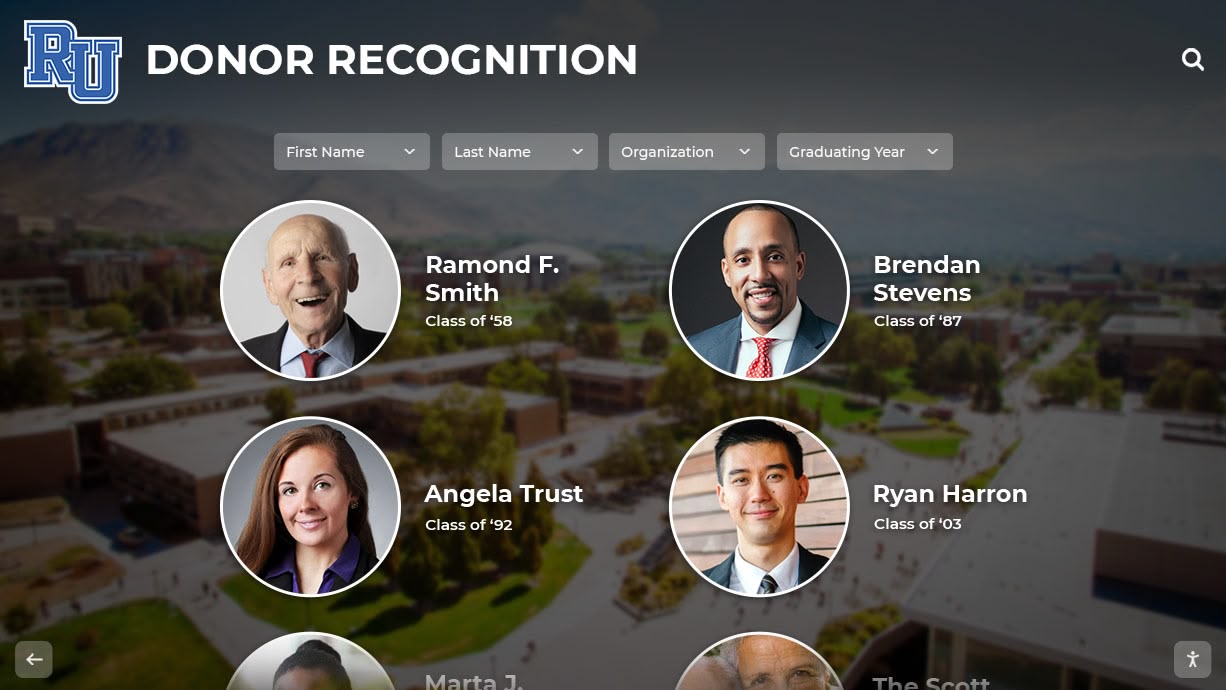
Building Sustainable Recognition Infrastructure
Implementing digital recognition systems that enhance recruiting requires strategic planning, appropriate resource allocation, and sustainable maintenance approaches that ensure long-term effectiveness.
Investment Considerations and ROI
Digital recognition systems represent significant initial investments, typically ranging from $10,000-$50,000 depending on display size, installation complexity, and platform features. However, comprehensive cost-benefit analysis reveals compelling return on investment through multiple value dimensions.
Recruiting impact represents the primary value driver. Even small improvements in recruiting success—landing one or two additional high-priority prospects per recruiting cycle because your campus visit experience impressed more than competitors—can dramatically impact program competitiveness and success. For many programs, this recruiting advantage alone justifies recognition system investments.
Operational efficiency provides secondary value through dramatically reduced time and cost required to maintain achievement recognition compared to traditional trophy case approaches. Digital systems eliminate recurring expenses for producing physical trophies, plaques, and display materials while reducing administrative time required for recognition updates.
Extended utility across multiple stakeholder groups amplifies value. While recruiting motivated initial investment, the same systems serve alumni engagement, community recognition, fundraising support, and institutional marketing—creating value far beyond single-purpose recruiting tools.
Selecting Appropriate Technology Partners
Success with digital recognition systems depends significantly on choosing technology partners who understand educational athletic environments and provide solutions specifically designed for institutional needs rather than generic digital signage platforms adapted for recognition purposes.
Purpose-built recognition platforms like those offered by Rocket Alumni Solutions include features crucial for recruiting effectiveness that general digital signage systems lack—intuitive content management enabling non-technical staff to update recognition easily, searchable achievement databases allowing recruit self-directed exploration, multimedia integration supporting photos and videos, and mobile web accessibility enabling remote exploration and post-visit engagement.
Comprehensive implementation support including installation assistance, staff training, and ongoing technical support ensures your investment delivers intended recruiting benefits rather than becoming unused technology that never reaches its potential.
Sustainable Content Development and Maintenance
The most impressive digital recognition systems remain valuable only with sustained content development ensuring currency and comprehensiveness. Establishing systematic processes for ongoing maintenance prevents recognition systems from becoming stale or outdated.
Designating specific staff members responsible for recognition content management creates clear accountability. Implementing submission workflows enabling coaches to report new achievements ensures complete, timely recognition. Scheduling regular content review cycles maintains quality and identifies enhancement opportunities.
Many successful programs assign recognition content management to administrative coordinators, graduate assistants, or student workers who can dedicate focused attention to quality content development and system maintenance under athletic department oversight.
Conclusion: Creating Campus Visits That Close Commitments
In competitive recruiting environments where talented prospective student-athletes have numerous options, the schools that create memorable, engaging campus visit experiences win commitments from top recruits. Every aspect of the recruit visit experience contributes to overall impressions—coaching staff interactions, facility quality, current team member authenticity, academic programming, and critically, how professionally and comprehensively you showcase your program’s achievements, traditions, and culture.
Digital recognition systems have become essential tools for athletic programs serious about recruiting success. These platforms transform achievement celebration from basic acknowledgment into engaging storytelling that helps recruits envision themselves contributing to program excellence, connects prospects emotionally with traditions and alumni success stories, and demonstrates institutional commitment to honoring achievement that assures recruits their future accomplishments will be properly celebrated.
As recruiting continues evolving with increasing emphasis on campus visit experiences, virtual components, and multi-stakeholder decision-making involving parents and coaches, comprehensive digital recognition accessible both on-campus and remotely provides sustainable competitive advantages that traditional trophy cases simply cannot match.
Ready to transform how your athletic program showcases excellence during recruiting visits? Discover how solutions like Rocket Alumni Solutions help schools create professional recognition displays that engage prospective student-athletes, showcase program traditions comprehensively, and create memorable campus visit experiences that close commitments from top recruits. These comprehensive platforms combine physical touchscreen installations with web-based accessibility, enabling your program to present its athletic heritage impressively whether prospects visit campus or explore remotely.
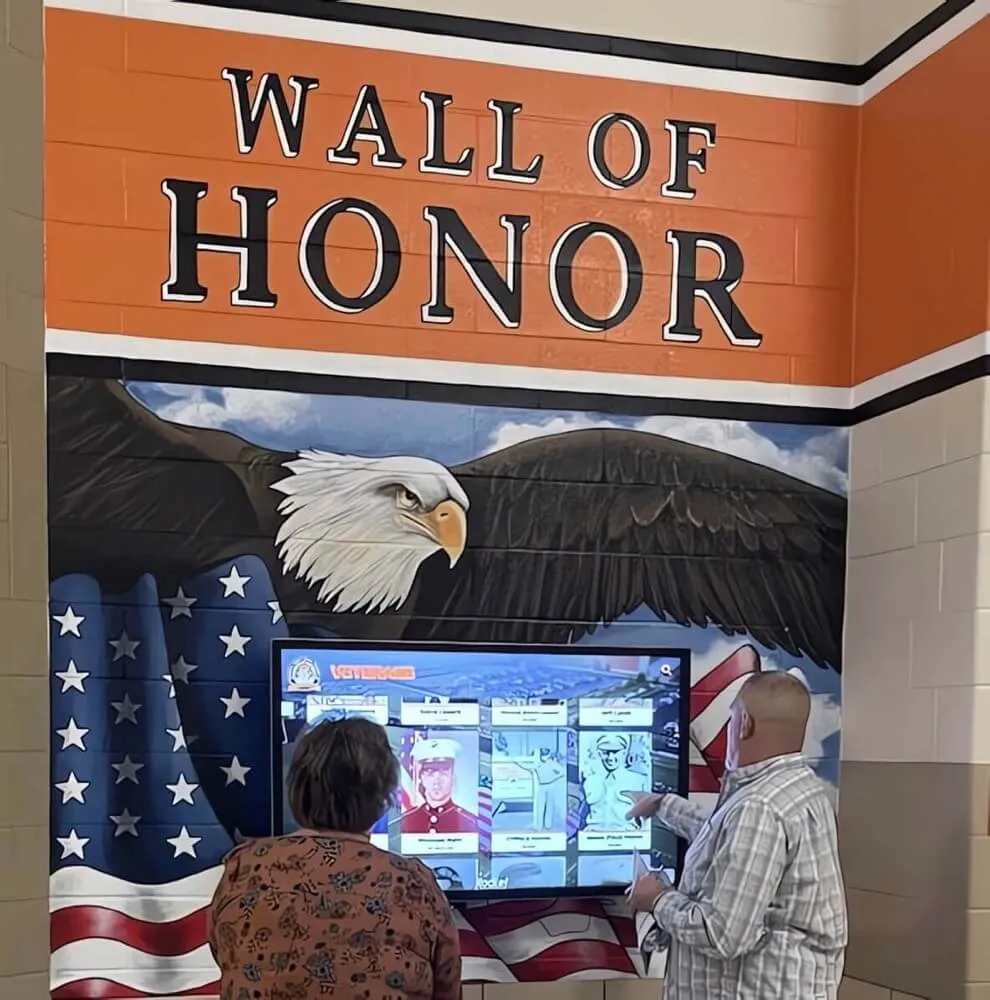
The most successful recruiting programs understand that campus visits represent precious opportunities to differentiate your program from competitors and demonstrate why talented prospects should choose your institution. By investing in modern digital recognition infrastructure, implementing strategic facility presentation, and leveraging technology to tell your program’s story compellingly, you create recruiting experiences that showcase excellence while building connections that turn campus visitors into committed athletes ready to contribute to your next championship run.
